This review was originally published in 2014 on the Transport Evolved website. The review was based on my experiences after driving the all-electric 2012 Rav4 EV for one year.
This review of the Rav4 EV is also intended as a primer for those who are learning about electric vehicles (EVs), those considering the switch from gasoline to electric, and those wondering if driving an EV will fit their lifestyle. The review is broken down into three installments that cover:
- 1) RAV4 EV BASICS
- 2) CHARGING
- 3) BENEFITS OF DRIVING ELECTRIC
Charging
We are often asked “How, when, and where do you charge the car?” Electric cars are charged on 3 types of charging stations: Level 1 (typical 120 volt outlet in U.S. homes); Level 2 (208/240 volt); or Level 3 (400+ volt = CHAdeMO / CCS / Tesla Supercharger). Amperage of charging stations also varies. The higher the volts and amps, the quicker the charge time. The on-board charger in your EV also determines charge time. The Rav4 EV has a 10 kW on-board charger – it can accept up to 10 kWh per hour. To charge the car we simply pop open the charging port and plug in. It’s that simple.
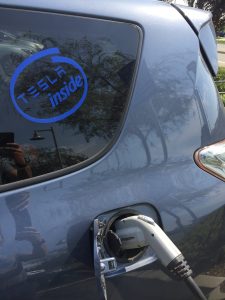
We are fortunate to live in an area with well-developed public charging infrastructure so we have choices. We can charge our car at work, at home, around town when going out for dinner or a movie, in parking garages, at shopping malls, and while shopping at stores like Target and Costco. The Level 2 charging stations at our local Target are free for the first two hours, but we’re never in the store that long. One hour of charging sends about 6 kWh of electricity to the Rav4 EV and probably costs Target 50 cents. In the mean time we’re inside spending $50, $60 or more. So that one hour free charge is sort of like getting a 50¢ coupon, and has made us more regular customers.
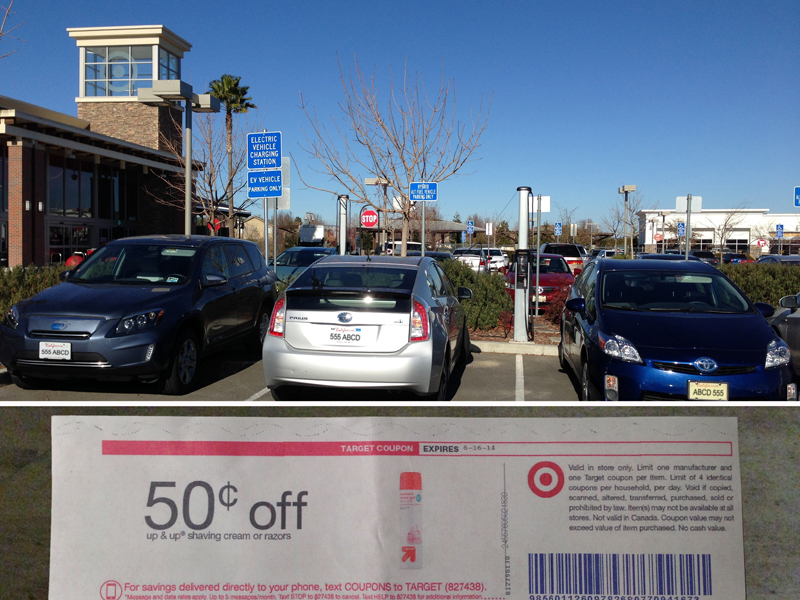
We are also asked, “How long does it take to charge the car?” Charging an electric car is not the same as filling a car with gas, the way you go about it is entirely different. You don’t pull up to an electric station, plug in, and then stand by waiting for the battery to charge. You plug in at home or work and go about your business. The car charges while you are busy working, or at home sleeping.
Most Level 2 public chargers can add about 20 miles of range per hour to the Rav4 EV battery. Four hours on the Level 2 chargers at my workplace provides 80 miles of range – more than enough for our daily needs. Overnight Level 2 charging at home, when electricity rates are often cheaper, is more than enough time to fully charge the battery.
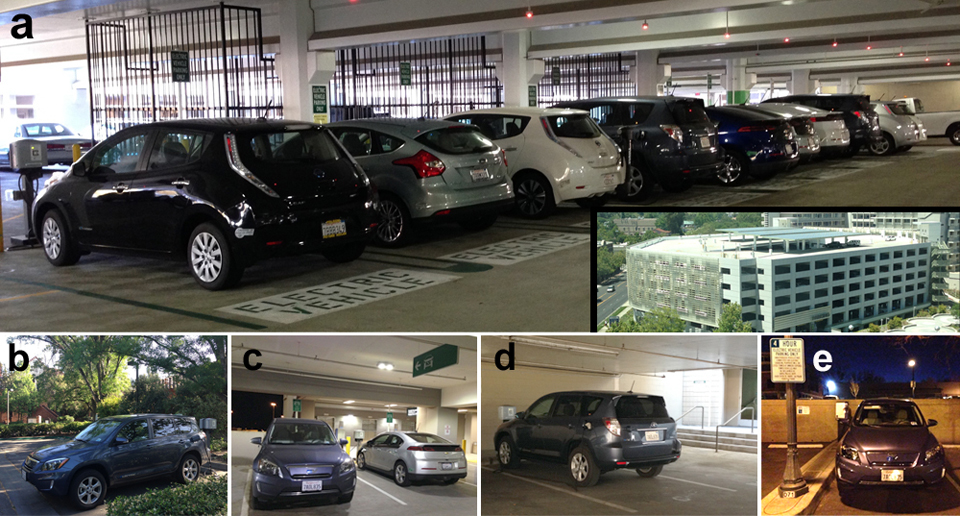
Public charging infrastructure is useful, but is not necessary for all people. The convenient thing about electricity is that it’s already pretty much everywhere, and many of us have access to outlets at home. Many EV owners charge their cars at home during the night. I bought an affordable Level 2 charging station (240 volt, 20 amp = 4.8 kW) that plugs into our dryer outlet and we charge our car in the garage or outside on the driveway. Trips to the gas station were a routine part of life, but now that I no longer need to stop for gas I don’t miss it at all.
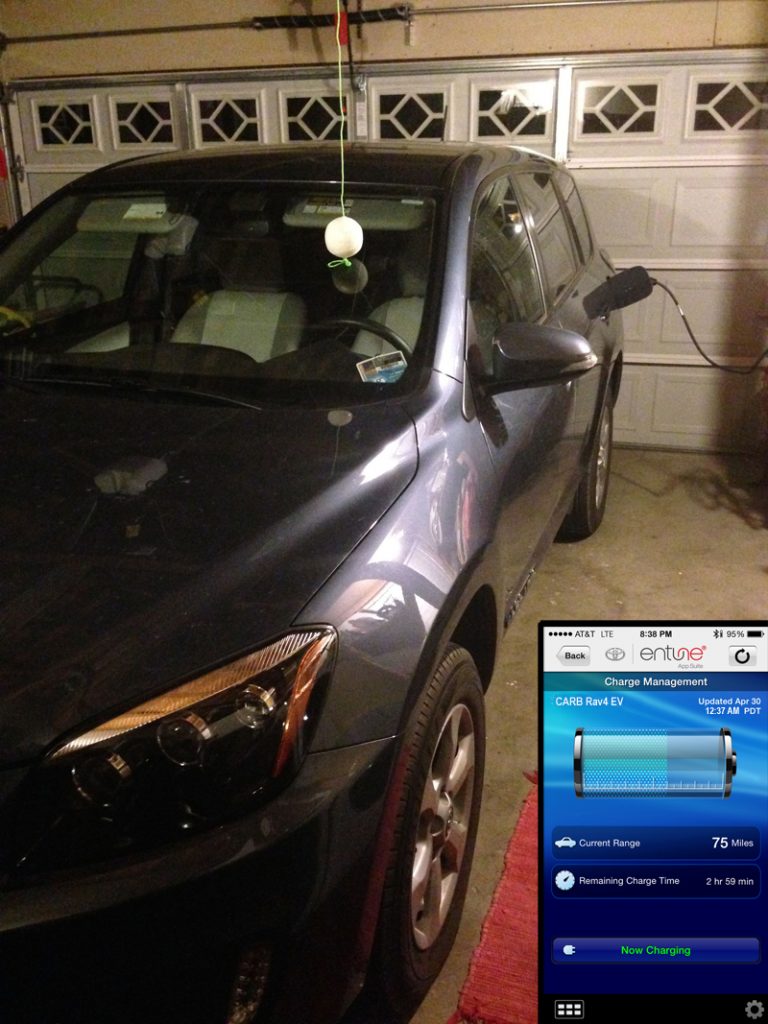
You might be wondering how much it costs to charge an electric car. Depending on the unpredictable cost of gasoline, you may spend 2 – 3 times less money fueling your car with electricity than with gasoline. Before buying the Rav4 EV, we drove a 50 MPG Prius as our main car. We paid $1066 buying 278 gallons of gas to travel 13,900 miles in the Prius last year. Now the Rav4 EV is our main commuting car and in 12 months we used about 4000 kWh of electricity to drive 13,100 miles. At 13.3¢ per kWh in our area that comes out to $532. Driving an EV cut our commuting cost in half.
What about longer trips? Friends have asked us, “What if you want to drive to LA?” (about 400 miles). Until recently the horizon for EV drivers was limited. Longer trips weren’t possible, and for the most part early EVs were designed and sold as commuter cars. But that is changing with the new generation of electric cars coming on the market. A growing number of companies like Tesla produce electric cars that can charge on Level 3 charge stations. This year Tesla owners drove their Model S sedans 3400 miles across the US in the dead of winter, stopping to charge their cars only at Tesla’s Level 3 charging stations called Superchargers. Total charging time? 15 hours. It’s worth repeating: 3400 miles = 15 hours charging time. This is game changing stuff folks. Nissan, BMW, Chevy and others now sell EVs with Level 3 charging ports. Both Tesla and Nissan offer free charging on Level 3 chargers.
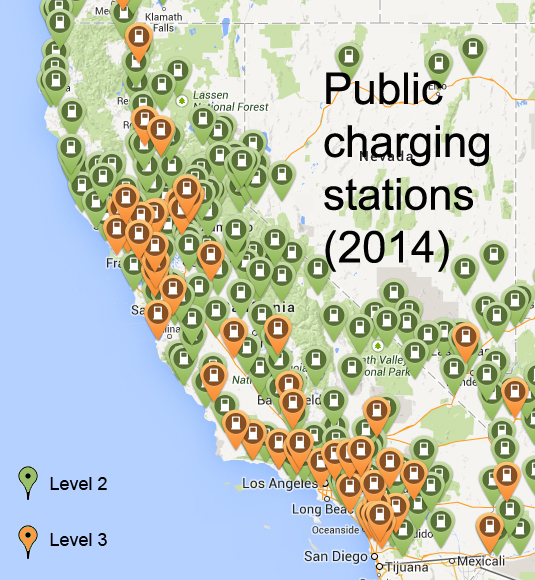
The network of Level 2 and Level 3 charging stations is rapidly expanding in California and other states. There are currently about 150 Level 3 CHAdeMO charging stations in California, and the number is growing. In Washington and Oregon there are at least 115 rapid charging Level 3 stations that are located every 25 to 50 miles along major highways. CHAdeMO can deliver up to 50 kWh per hour (kW), compared to about 7 kW for most Level 2 stations. CHAdeMO can charge a Nissan Leaf up to 80% capacity in 30 minutes. DC combo chargers may deliver up to 90 kW, and Tesla Superchargers are currently set at 120 kW (2020 update: newest Superchargers deliver 250 kW). Toyota did not include a rapid charging port on the 2012-2014 Rav4 EV, so we were initially a hybrid family – one EV and one gas-powered Prius. But hope is on the way. Quick Charge Power of San Diego developed a CHAdeMO port for the Rav4 EV called JdeMO. (2020 update: We had the JdeMO port installed on our car in Sept 2015, read here about the install and and how we used the JdeMO DC quick charging port to fuel our travels in California). Access to rapid charging stations will make long distance trips a reality, and west coast camping trips in our Rav4 EV will become a memorable part of our children’s lives. Visit Plugshare.com to view public chargers in your area. Petition your favorite stores and restaurants for charging stations, and let them know that “If you build it we will come.”
The last installment in this 3-part series will cover the benefits of driving electric, and Toyota’s planned demise of the Rav4 EV.
Read PART 1: RAV4 EV BASICS
Read PART 3: BENEFITS OF DRIVING ELECTRIC

